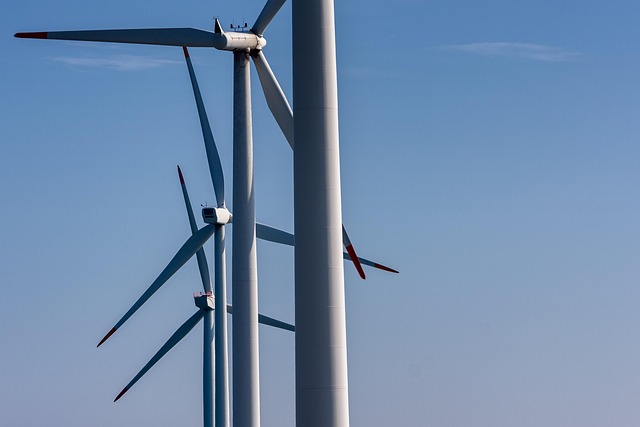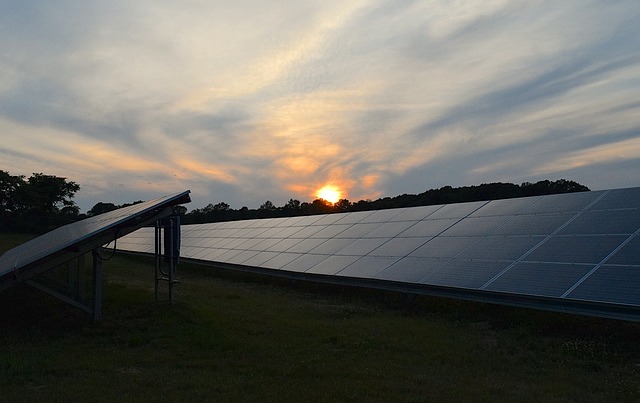A Beginner’s Guide to Green Energy: What You Need to Know
As the world grapples with the realities of climate change and depleting natural resources, the quest for sustainable energy solutions becomes more pressing. Green energy, derived from renewable sources, offers a viable path toward reducing our carbon footprint and promoting environmental well-being. This guide is designed to introduce beginners to the essentials of green energy, its various forms, benefits, and how you can contribute to a greener future.
Understanding Green Energy
Green energy refers to energy obtained from natural sources that are replenished faster than they are consumed. This energy doesn’t produce harmful emissions that contribute to pollution and climate change, making it a crucial part of a sustainable future. The most common forms of green energy include solar, wind, hydroelectric, geothermal, and biomass.
1. Solar Energy
Solar energy harnesses the power of the sun through photovoltaic cells or solar thermal systems. As one of the most accessible forms of green energy, it can be utilized in residential, commercial, and industrial settings. Solar panels can be installed on rooftops or in open areas, converting sunlight into electricity or heat.
The primary benefits of solar energy include:
- Reduced Electricity Bills: By generating your own electricity, you can lower your energy costs.
- Low Maintenance: Solar panels require minimal maintenance once installed.
- Energy Independence: Utilizing solar energy reduces reliance on fossil fuels and imported energy sources.
2. Wind Energy
Wind energy captures the kinetic energy of wind through turbines, converting it into electricity. Wind farms can be found onshore or offshore and vary in size from small individual turbines to large, expansive installations that power whole communities.
Advantages of wind energy include:
- Clean Energy Source: Wind energy produces no greenhouse gas emissions during operation.
- Job Creation: The wind energy sector is rapidly growing, providing numerous jobs in manufacturing, installation, and maintenance.
- Scalability: Wind systems can be implemented on various scales, from small individual turbines for homes to massive wind farms.
3. Hydroelectric Energy
Hydroelectric energy is generated by harnessing the power of moving water, often via dams that store water in reservoirs. When water is released, it spins turbines, generating electricity. This form of energy has been around for over a century and continues to be a leading source of renewable energy worldwide.
The benefits of hydroelectric energy include:
- Reliable Power Supply: Hydroelectric plants can provide a consistent and stable source of energy, capable of meeting peak demand.
- Long Lifespan: Hydroelectric plants can operate for decades with minimal maintenance.
- Water Management: Reservoirs created for hydroelectric power can also support irrigation, recreation, and flood control.
4. Geothermal Energy
Geothermal energy utilizes heat from within the Earth to generate electricity or provide heating. This energy source can be harnessed near volcanic or tectonic plate boundaries, where heat flow is concentrated.
Key advantages of geothermal energy include:
- Low Emissions: Generating power from geothermal sources produces a fraction of the carbon emissions of fossil fuels.
- Constant Energy Source: Unlike solar and wind energy, geothermal energy is not dependent on weather conditions, providing a reliable source of power.
- Small Land Footprint: Geothermal plants require less land compared to other energy sources, minimizing environmental impact.
5. Biomass Energy
Biomass energy is derived from organic materials such as plant and animal waste. This renewable energy source can be transformed into biofuels, electricity, and heat through various processes. Common forms of biomass include wood, crop waste, and animal manure.
Benefits of biomass energy include:
- Utilization of Waste: Biomass energy allows for the recycling of waste materials, converting them into viable energy sources.
- Carbon Neutral Potential: Plants absorb carbon dioxide as they grow, potentially offsetting emissions when biomass is burned for energy.
- Energy Diversity: Biomass adds to the mix of renewable energy sources, reducing dependence on fossil fuels.
The Benefits of Green Energy
Switching to green energy offers numerous benefits that extend beyond environmental impact. Here are some of the most compelling advantages:
Environmental Benefits
Green energy significantly reduces greenhouse gas emissions, helping to mitigate the effects of climate change. By utilizing renewable sources, we protect wildlife habitats and preserve ecosystems for future generations. Moreover, transitioning away from fossil fuels decreases air and water pollution, leading to healthier communities and environments.
Economic Advantages
Investing in green energy can stimulate the economy by creating new job opportunities in construction, manufacturing, and maintenance. As demand for renewable energy technologies grows, local economies can thrive through increased investment in sustainable solutions. Additionally, many renewable energy sources have low operational costs compared to fossil fuels, leading to long-term financial savings.
Energy Security
Renewable energy sources enhance energy security by reducing dependence on imported fossil fuels. By diversifying energy supply, countries can protect themselves against fluctuations in energy prices and geopolitical tensions. A strong renewable energy sector contributes to a more resilient and self-sustaining energy infrastructure.
Making the Switch to Green Energy
Transitioning to green energy is a crucial step for individuals, communities, and businesses that want to contribute to a more sustainable world. Here are some ways you can get started:
Home Energy Efficiency
Before investing in renewable energy solutions, consider making your home more energy-efficient. Simple changes like sealing windows and doors, switching to LED lights, and investing in energy-efficient appliances can reduce your overall energy consumption.
Invest in Solar Panels
If feasible, installing solar panels can significantly cut your electricity costs while reducing your carbon footprint. Many governments offer incentives, rebates, and tax credits to encourage homeowners to adopt solar technologies, making the switch more affordable.
Support Local Renewable Energy Initiatives
Engaging with local initiatives promoting renewable energy can amplify your impact. Consider joining community solar projects or supporting policies that encourage clean energy development in your area.
Choose Green Energy Providers
If you cannot install renewable energy systems in your home, consider selecting a utility provider that offers green energy options. Many companies provide plans that source a portion or all of their electricity from renewable materials.
The Future of Green Energy
The future of green energy looks promising, driven by advances in technology, increasing public awareness, and supportive government policies. Innovations in battery storage are making renewable energy more dependable, while improved efficiency in solar panels and wind turbines is lowering costs.
Additionally, as more people become aware of the importance of sustainability, the demand for green energy solutions continues to rise. This societal shift will likely lead to greater investment in renewable technologies, making them more accessible to everyone.
Conclusion
As a beginner in the realm of green energy, understanding its principles, benefits, and implementation strategies can empower you to make a meaningful difference. By embracing renewable energy sources, you not only contribute to a healthier planet but also pave the way for a sustainable future. Whether through personal energy efficiency improvements, investing in renewable technologies, or supporting community initiatives, every action counts in the fight against climate change. The journey toward a greener world begins with informed choices and a commitment to positive change.




